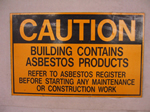Tag: EPA
How Do I Know If I Am a CESQG?
Common RCRA Violations
Training Checklist for Asbestos Activities in Schools
How to Tell If Your Asbestos Activities Fall Under D&R Requirements
Sugar Refiner Stuck with Big EPA Penalty—August Enforcement Wrap-up
The Most Common Container Violations
11 Container Compliance Tips
Reduce Waste at Work
Writing/Printing Paper Establish a companywide double-sided copying policy, and be sure future copiers purchased by your company have double-sided capability. Reuse envelopes or use two-way (send-‘n-return) envelopes. Keep mailing lists current to avoid duplication. Make scratch pads from used paper. Circulate (rather than copy) memos, documents, periodicals, and reports. Use outdated letterhead for in-house memos. […]
Calculating Secondary Containment for Your SPCC Plan
Amanda Czepiel, J.D., SPCC Expert aczepiel@blr.com










